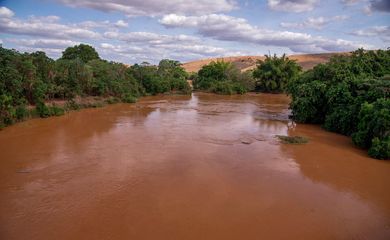Sludge from mining disaster reaches Bahia south coast


The Abrolhos archipelago, located 70 kilometers off Bahia's coast, is one of the most important areas in Brazil's coast in scientific and environmental terms

An ocean plume that has reached the southern region of Bahia state and the Abrolhos National Marine Park, the place with the richest coral reef biodiversity in the South Atlantic, is being monitored by the Brazilian Institute for the Environment and Renewable Natural Resources (IBAMA) and the Chico Mendes Institute for Biodiversity Conservation (ICMBio).
At a news conference Thursday (Jan. 7), Marilene Ramos, chair of IBAMA, said the stain has been assigned to tailings sludge from the collapse last November of a dam owned by Samarco mining company in Minas Gerais. “An experts' flight over the area suggests that the stain originated from Samarco's mining disaster, so we notified the company to collect samples and report back (on the situation),” said Ramos. She said the first samples have been collected and results are expected within 10 days.

Brasília - ICMBio's chair Cláudio Maretti and IBAMA's Marilene Ramos talk about the environmental disaster
The chairman of ICMBio, Claudio Maretti, pointed out the Abrolhos archipelago, located 70 kilometers off Bahia's coast, is one of the most important areas in Brazil's coast in scientific and environmental terms. He said no beach activity restrictions have been imposed so far for southern Bahia, a busy tourist location.
According to Maretti, it will be a while before the full extent of the environmental impact caused by the mud on local biodiversity can be known. “The immediate effect is reduced productivity of marine vegetation, phytoplankton, and coral reefs, with damage to marine life,” he said. But the impact will be felt in the long run, and experts say the possibility of coral reef extinction cannot be ruled out, but no increases in fish and seabird death levels have been reported at this point.
Translated by Mayra Borges
Fonte: Sludge from mining disaster reaches Bahia south coast




